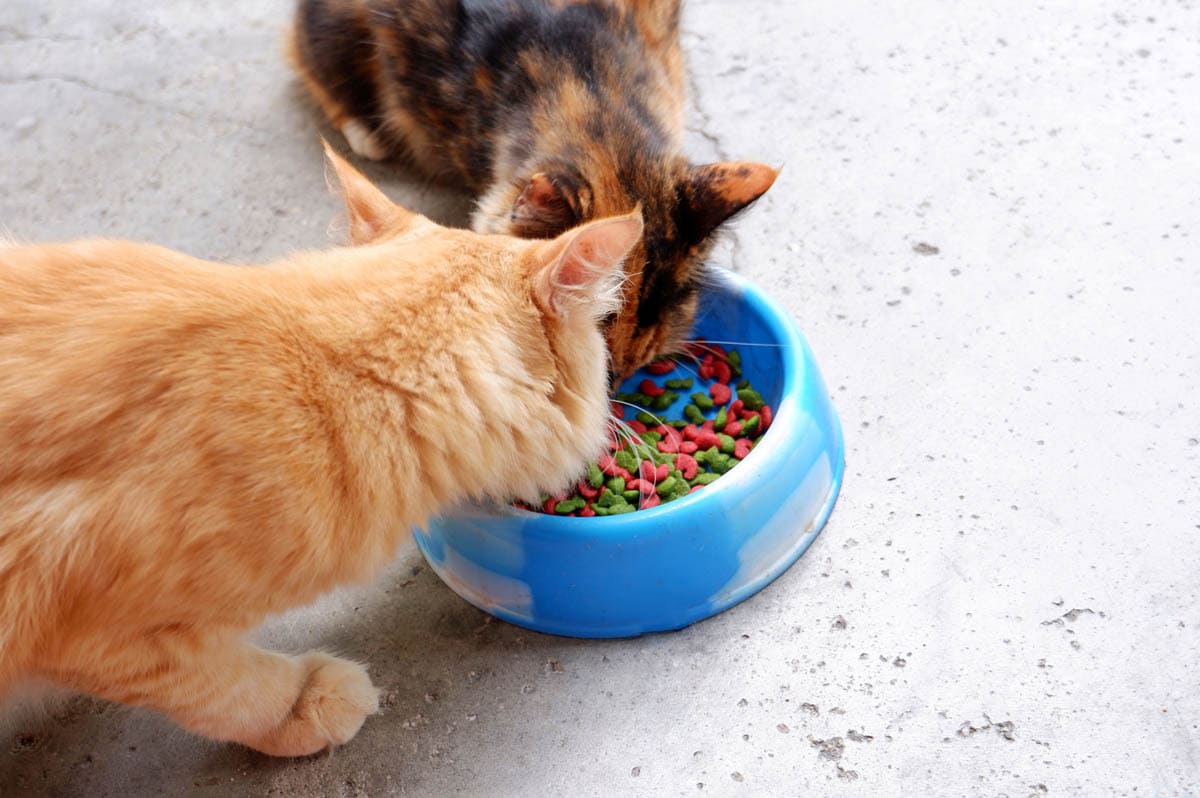Feline acne is a non-contagious skin condition characterised by blackheads on the chin. Plastic food and water bowls have been linked to feline acne. Common symptoms of feline acne include blackheads, hair loss, redness, swelling, inflammation and in advanced cases, firm, painful nodules with draining lesions.

There are many causes of feline acne, and it may be possible that several factors are at play. The use of plastic food and water bowls high on the list.
Why do plastic food bowls cause acne?
There are two potential issues with plastic food bowls. Contact dermatitis due to allergies to plastic and bacterial contamination of plastic food bowls. Unfortunately, there is no data-driven literature to back up these claims, although one research paper does discuss the role of plastic in the development of contact dermatitis in dogs.
Contact dermatitis
Cats can develop contact dermatitis from almost any substance, including plastic. In this case, the head and mouth are within the closest proximity to the food bowl which can manifest as itching, pruritis, inflammation in the affected area.
Bacterial contamination
Plastic bowls are porous and over time can develop scratches, and peel which can hold and trap bacteria. Contact with bacteria has been linked to the development of feline acne.
Treatment and prevention of feline acne?
Treatment of feline acne involves a multimodal approach. Address the underlying cause (if one is found) as well as manage the acne.
Food bowls
Many cats eat from plastic bowls and have no issues whatsoever, but if you do have a cat who is prone to feline acne, switching to stainless steel, glass or ceramic food bowls may help.
Wash food and water bowls at least once a day in hot, soapy water, rinse thoroughly to remove any detergent and air dry. Daily washing helps to remove the sticky bacteria-laden biofilm from water bowls as bacteria food bowls. Disinfection is necessary to sterilise. Read here for more information on how to wash and disinfect cat food and water bowls.
Clean the chin
Wash the chin once or twice a day with witch hazel, diluted chlorhexidine or iodine.
Topical antiseborrheic medications
These include ointments or gels which contain 2-5% benzoyl peroxide or salicylic acid. Watch for signs or redness or inflammation and consult your veterinarian.
Prescription medications
Severe cases will need medicated treatments prescribed by a veterinarian.
Take-home points
- Feline acne is one of the most common skin conditions in cats but is manageable, especially if caught early.
- Plastic food bowls have been indicated as a cause, and switching to stainless steel, ceramic or glass is a cheap solution.
- Feline acne is not contagious, but if you do have several cats in the household with acne, it is important to look at factors they have in common.

